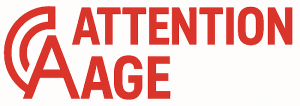Whether you’re applying to a high-end restaurant, pitching yourself as a private chef, or just trying to stand out on social media, your portfolio matters. It’s your chance to show not just what you can cook—but who you are as a culinary professional.
A great portfolio can open doors. A cluttered or confusing one can close them. Here’s what you should include—and what you should leave out.
What to Include
1. A clear introduction
Start with a short bio that tells your story. Where are you from? What kind of cuisine do you specialize in? What’s your experience level? Keep it clear and human.
2. High-quality food photos
Visuals are key. Use well-lit, clean images of your best dishes. Focus on presentation, variety, and plating style.
- Include 8–12 photos that show your range
- Highlight seasonal dishes, signature recipes, or specialty techniques
- Use natural lighting when possible
3. Work experience (but only the relevant stuff)
List past kitchens you’ve worked in, your roles, and what you learned or achieved there. Focus on quality, not quantity.
- Include restaurant names, dates, and positions
- Mention any leadership roles or special tasks (e.g., inventory, menu design)
4. Certifications and awards
If you have formal training, food safety certificates, or have won cooking competitions—add them. These show professionalism and credibility.
5. A sample menu
Include one or two sample menus. This helps employers or clients understand your style and creativity.
6. Contact information
Make it easy for someone to reach you. Add your email, phone (optional), and social media or website link.
7. Testimonials (if available)
Short quotes from past employers, colleagues, or clients can make a big impact. They build trust fast.
What to Leave Out
1. Every job you’ve ever had
Focus only on roles relevant to cooking. A long, unrelated list (like retail or school jobs) distracts from your main skills.
2. Blurry or messy food photos
A few great shots are better than many mediocre ones. Don’t include images that look rushed or poorly lit.
3. Overly complex design
Keep your portfolio clean and easy to navigate. Avoid clutter, tiny fonts, or hard-to-read colors.
4. Outdated or unfinished work
Only show your best, current work. If something doesn’t represent your level today, cut it.
5. Unnecessary personal info
You don’t need to list your age, address, or personal details. Keep it professional and focused.
Final tip:
Your portfolio should reflect your personality and your professionalism. Update it regularly, keep it simple, and always put your best work forward.
If you’re serious about getting hired or attracting clients, a strong portfolio is one of your most powerful tools. Make it count.

